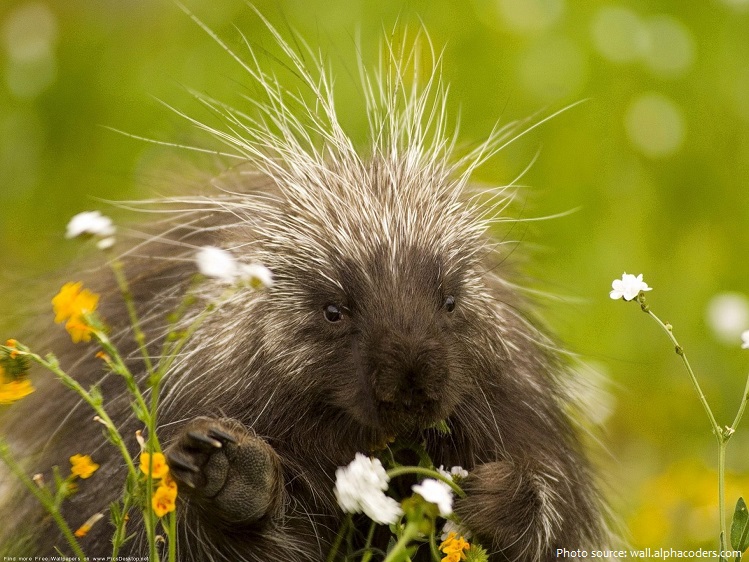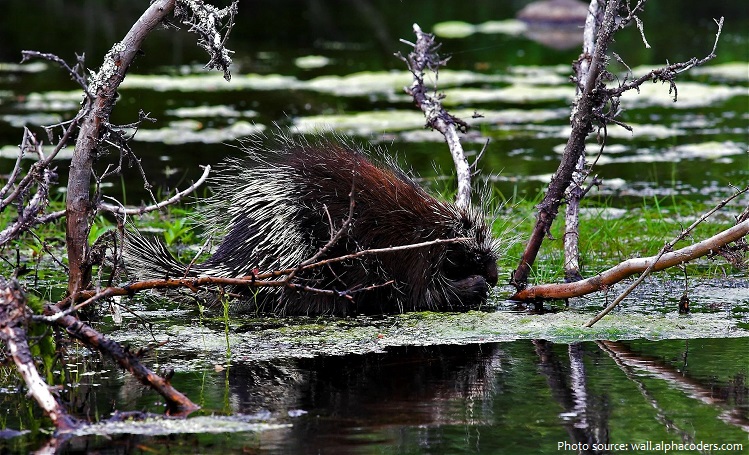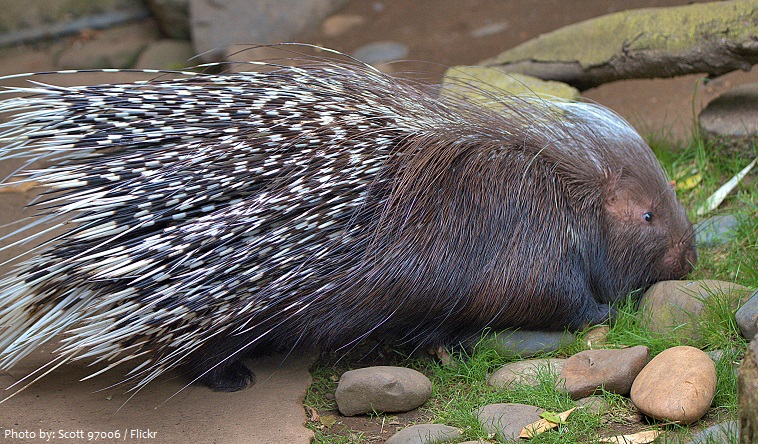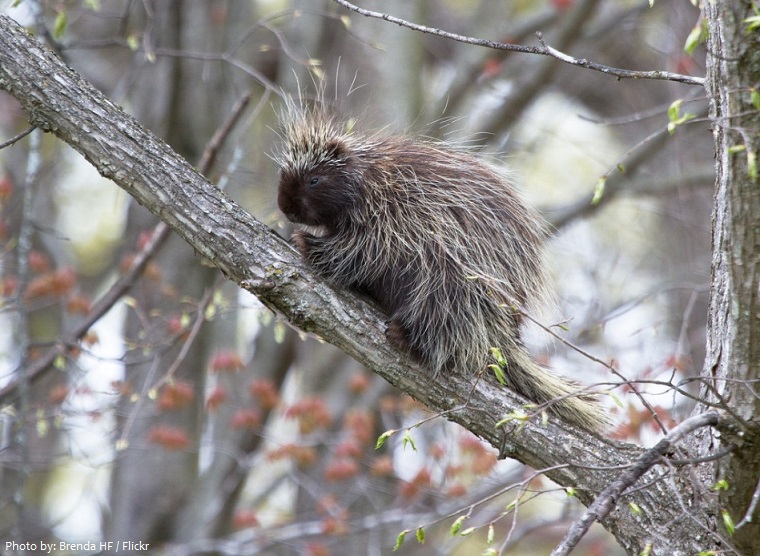Porcupines are large rodents with defensive spines or quills on the body and tail.
There are 29 different species of porcupine found in their native habitats around the world.
The average life expectancy of a wild porcupine is 5 to 6 years, while their captive counterparts have been known to live up to 10 years.
They are found in two main regions of the world, so scientists group them into either Old World or New World porcupines.
The Old World porcupines live in southern Europe, Asia, and most of Africa. They live in forests and deserts, and on rocky outcrops and hillsides.
The New World porcupines are indigenous to North America and northern South America. They live in wooded areas and can climb trees, where some species spend their entire lives. They are less strictly nocturnal than their Old World relatives, and generally smaller. In taxonomic terms, they form the family Erethizontidae.
Porcupines can be found on rocky areas up to 3,700 meters (12,100 feet) high.
They are generally nocturnal, but are occasionally active during daylight.
Most porcupines are about 60–90 cm (25–36 in) long, with an 20–25 cm (8–10 in) long tail.
Weighing 5–16 kg (12–35 lb), they are rounded, large, and slow, and use aposematic strategy of defense.
They occur in various shades of brown, gray, and white.
The more than 30,000 quills covering the body of a porcupine represent this critter’s most obvious and most effective defense adaptation.
Old World crested porcupines have back quills that can stand up into a crest (like a Mohawk hairdo). The crest starts from the top of the head and goes down to the shoulders. They display their weaponry for all to see. Each quill is marked with black and white bands. Some quills can be up to 51 centimeters (20 inches) long. These long, pliable quills act as guard hairs and form a “skirt.” When threatened, the skirt can be erected, making the porcupine appear two to three times bigger.
Smaller, rigid quills that are 20 centimeters (8 inches) long are densely packed over the Old World porcupine’s rump and back. These can stab any potential threat. At the base of the tail, the porcupine has blunt, hollow quills that rattle when shaken, serving as a warning to potential predators. If the noise doesn’t work, the porcupine may try to charge backward into the predator. When threatened, a crested porcupine stamps its feet, growls, and grunts to scare off the predator.
The quills of New World porcupines are much smaller (about 4 inches or 10 centimeters long) but work just as well. The end of each quill has a small barb (like a fish hook) that snags the flesh, keeping the quill stuck in the enemy’s skin.
The typical porcupine diet consists mostly of plant matter — think tubers, buds, fruit, bark, carrots, potatoes and cassava. During the wintertime, porcupines eat a lot of tree bark, as well. They will also eat bugs once in a great while.
Porcupines are mostly nocturnal, spending their evenings foraging for dinner. They tend to mind their own business, getting their dander — and their quills — up only when threatened.
They are solitary during much of their lives. If two adults are together, it is usually a mated pair or siblings.
Porcupines are arboreal, built for climbing trees. Their prehensile tails make the task of living in the trees easier. Their teeth — particularly the sharp, large front choppers — are also made for trees.
Although porcupines do not hibernate during the winter, they remain in their dens during especially cold or inclement weather.
Porcupines are very vocal during mating season and the gestation period is about 7 months. Porcupine babies, called porcupettes, are not born with sharp or barbed quills. Instead, the porcupette’s quills are soft and bendable, gradually hardening in the first few days after birth. The youngsters stay with their mother for just a few months before they are ready to live on their own.
Fishers are a primary predator of porcupines, but quills have been found embedded in coyotes, pumas, bobcats, foxes, lynx, bears, wolves and even Great Horned Owls. These predators kill a porcupine by biting its unprotected face or by flipping it over to expose the vulnerable underside.
A family of porcupines is called a prickle — really!
The word porcupine in Latin means “quill pig.” It’s an inaccurate scientific description as porcupines are rodents and pigs are even-toed ungulates. Yet Latin isn’t the only language misidentifying the porcupine: The French word equivalent to the English porcupine is porc espin or “spined pig”. In either case, the wording focused on the porcupine’s quills accurately depicts the feature he is best known for having.
A greasy coating on porcupine quills contains antibiotics, possibly to protect the animal from infection if it is accidentally pricked by its own quills.





